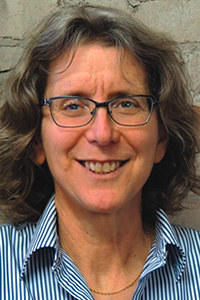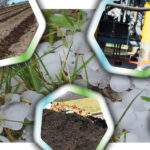
Nora Goldstein
BioCycle February 2018
BioCycle turns 60 in 2019. As was the case for our 50th Anniversary, we’ve started looking back at the beginning years — the 1960s — to gauge how far organics recycling has come. After a brief search, I came across an Editorial written by Jerome (Jerry) Goldstein, our founder, from the Autumn 1961 issue of Compost Science (BioCycle’s original name). The title caught my attention: “How Do You Sell Compost?” Here’s an excerpt from the first paragraph:
“Fine progress has been made in compost technology. Equipment has been improved; new controls have been instituted to insure production of a stable end product; laboratory studies have revealed important facts about the decomposition of organic waste materials. … In spite of such advances, there still exists a vital area where little progress is actually being made. This is the field of marketing — building a consumer acceptance and stimulating a demand for compost. The great difficulty is that the product right now exists in such relatively small quantities.”
Earlier in 1961, in the Winter issue, Robert Rodale wrote an article titled “Marketing Compost.” It covered several topics, e.g., compost spreaders and testing soil for humus content. The heading of the last section of the article is: “Sales Statistics of Compost And Organic Fertilizers.” It turns out that the U.S. Department of Agriculture published figures each year covering consumption of compost and other organic fertilizers, broken down by regions of the country. “These figures are interesting and useful, especially for spotting trends from year to year and for observing variations in demand and consumption from one region to another,” wrote Rodale. “Compost consumption figures, however, cover only sales by manufacturers of fertilizer and it is quite possible that much compost production is therefore not reported. For the year ended June 30, 1959, the USDA reports consumption of 19,805 tons of compost.”
The article includes a table with the USDA data. The West North Central region consumed the most compost (8,421 tons), followed by the Central East North (7,669 tons). The Pacific region consumed only 37 tons, the lowest amount reported. Added Rodale: “Under the category of dried manure, note the tremendous figure of 271,148 tons for the Pacific states, compared to much smaller consumption in other areas. One explanation for that figure may be the dry climate of California, which would enable manure to be dried and bagged without the use of special machinery or buildings to protect the operation from the weather.”
So what does looking back tell us about 2018 and beyond? Let’s start with the answer to the question in Jerry’s 1961 Editorial, “How Do You Sell Compost?” We have learned a lot in the last 59 years about selling compost, and several people — including Ron Alexander of R. Alexander Associates, Inc. and Rod Tyler of Green Horizons Environmental LLC — have written books on the topic. Today (and for a number of years now), the question is: How can we sell a lot more compost? That question will be front and center at BioCycle’s 31st Annual West Coast Conference, March 26-29, 2018 in San Diego, starting with a Workshop on March 26 titled: “Compost And Digestate Volumes Are Increasing — Are California Markets Ready?” Recent laws enacted in California are driving increasing volumes of organic waste streams from disposal to composting and anaerobic digestion. At the same time, CalRecycle’s new limit on contaminants in finished compost went into effect on January 1, raising the bar on compost quality.
Sessions on compost and digestate markets continue on March 27-28. Then on March 29, attendees will have the opportunity to get a first-hand look at what it takes to produce and market quality compost. Agri Service, Inc. is hosting a 3-hour compost quality and marketing training at its El Corazon composting facility in Oceanside, California.
In short, looking back helps us recognize and appreciate the progress we’ve made. And get excited about how much more there is to learn.









